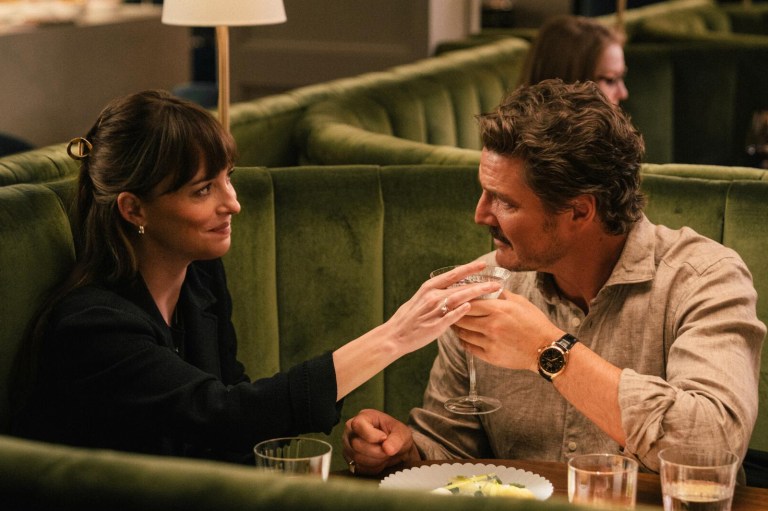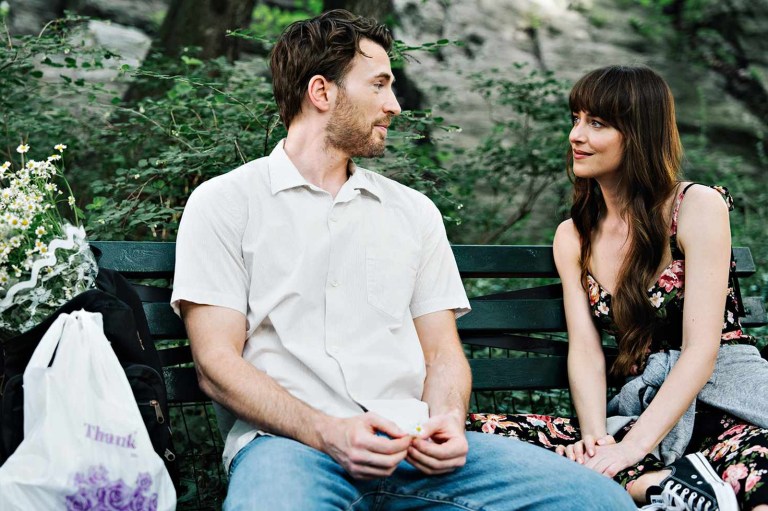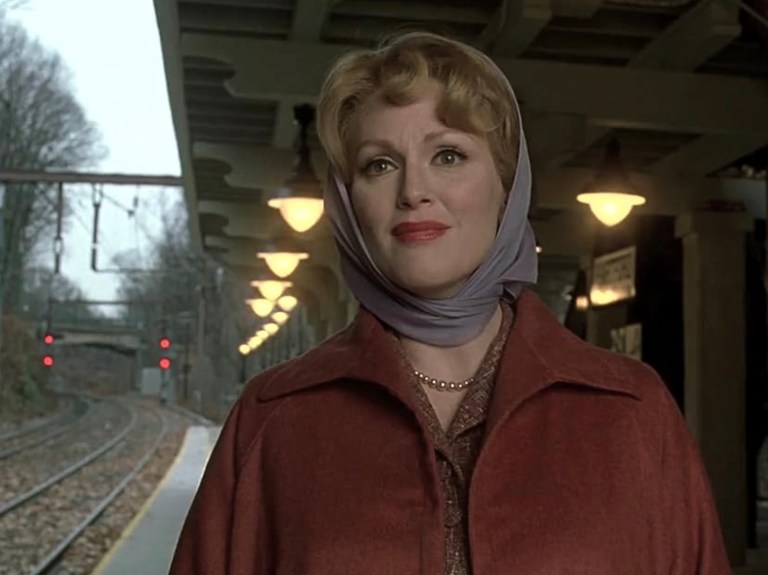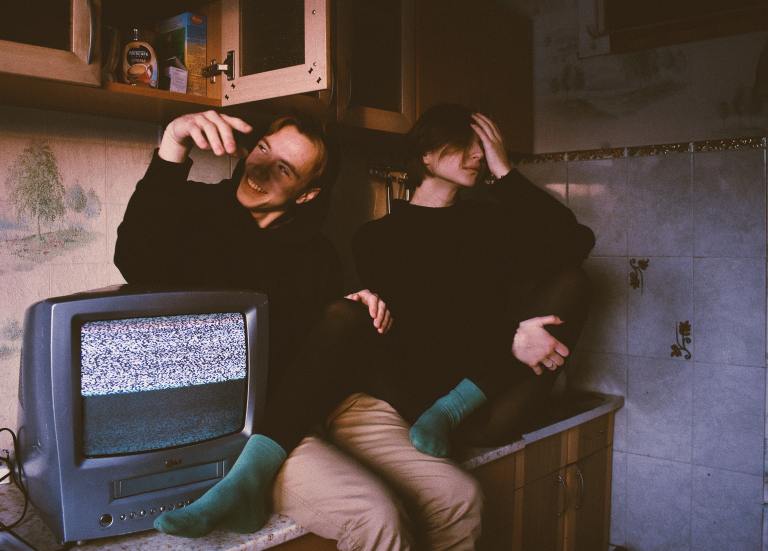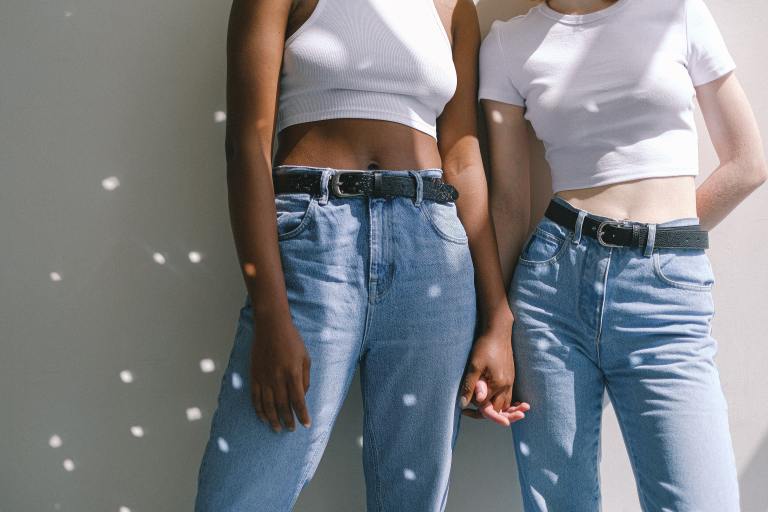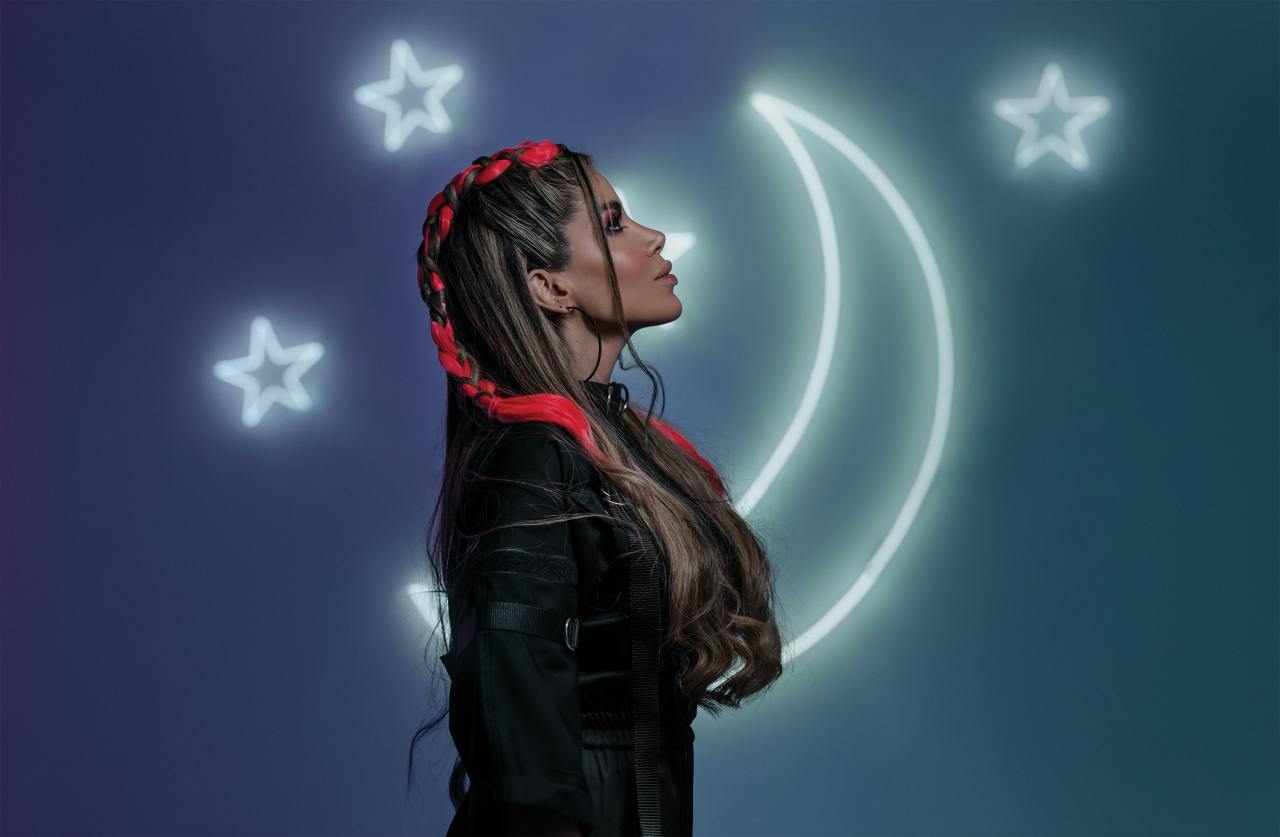
10 Artists Whose Work Will Change The Way You See The World Around You
Nihalani's work reacts to the spaces many of us encounter everyday.
By Thought Catalog Sponsored Posts
Through their life experiences, these dreamers look beyond the boundaries of their medium to create something so imaginative, you can’t help but stand back in awe. This story is brought to you by vapor-distilled Smartwater, who found unique inspiration for their water by looking up to the sky. We hope the change in perspective this piece offers will help inspire you.
While the Web provides artists with a global platform to showcase their work, only a select few can capture the hearts and minds of viewers with their unique and compelling visions. These are the innovators who transcend language barriers: their works immediately grab you, making you believe – if only for a second – that such scenes could actually exist. Through their life experiences, these dreamers look beyond the boundaries of their medium to create something so imaginative, you can’t help but stand back in awe.
Today, we’re proud to profile ten of these individuals. You’ll meet the photomanipulation specialist who turns reality on its head by taking photos of everyday life and then changing them into something remarkably familiar yet strangely surreal. Later, we’ll profile the installation whiz who miraculously creates clouds . . . indoors. These are the virtuosos who will shatter your perceptions of reality. Not only will we spotlight their most creative works, we’ll share the moments that shaped them into becoming the visionaries they are today. Now, without further ado, here are the ten contemporary artists you’ll want to keep your eyes on.
1. Katerina Plotnikova (Fine Art Photographer)


When she was just six-years-old, Katerina Plotnikova began taking painting lessons. In college, she specialized in advertisement design, which was when she was first introduced to photography. Fast forward a few years, and now, the Moscow-based photographer takes whimsical portraits of young women alongside mammals like bears, elephants, and giraffes. With the help of professional trainers, Plotnikova captures models interacting with live animals. Her fascinating, fairytale-like photos mimic a princess lost in a magical forest. There is no post-processing done in Photoshop, save slight color correction. “All of my passion towards painting – and my years of academic art training – have helped me to discover a new form of art,” she says. “Though, I think my vision was with me all the time. I’ve always shown the world as I see it.”
2. Erik Johansson (Photomanipulation Artist)
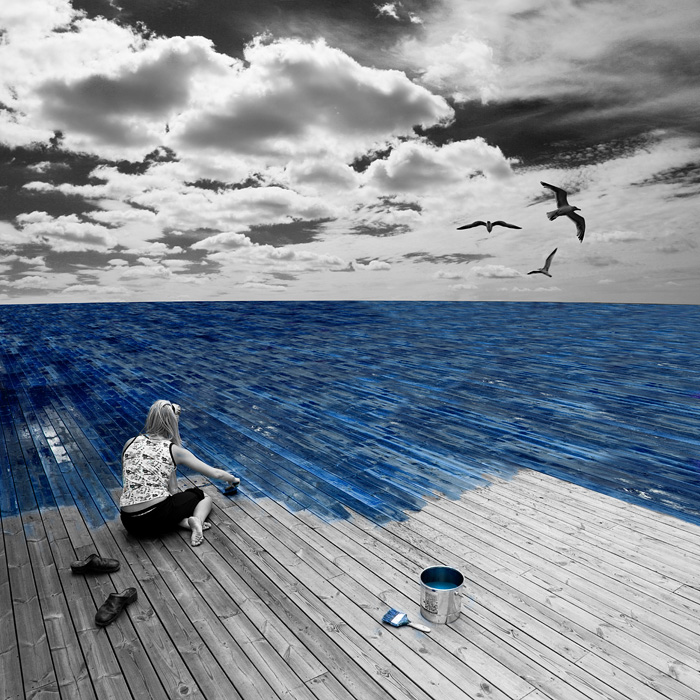
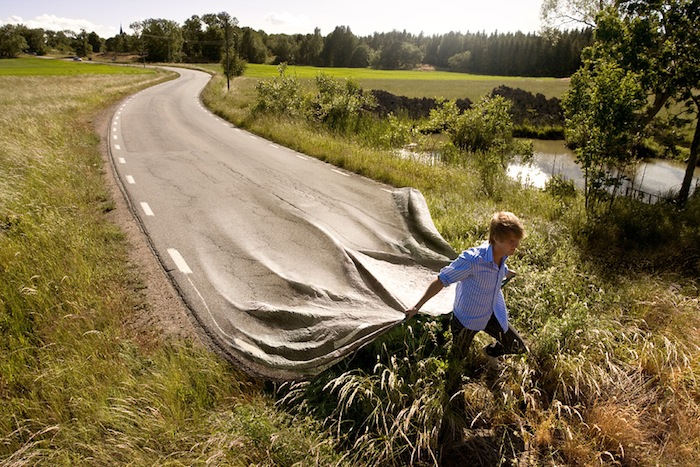
Master photomanipulaion artist Erik Johansson takes pictures of everyday life and then retouches them in such a way that the scenes appear out of this world. Is that man really paving a roadway? Is water actually dripping from that picture frame? In his words, Johansson fuses the “problem solving part” of his brain with the “visual part” to create a holistic picture. “I always see my work as troubleshooting,” he says. “How can I create something that isn’t there but make it look like it is?” The game-changing moment of inspiration arrived in 2000, when he first got his hands on a digital camera. “That’s when I discovered digital manipulation,” he says, “and that I could create something that wasn’t actually there.”
3. Moki (Painter)
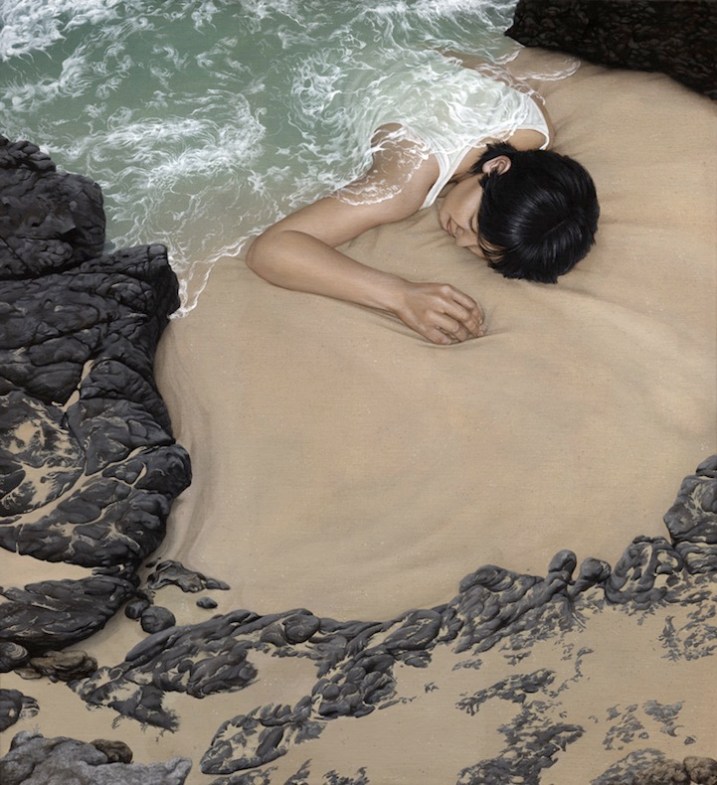
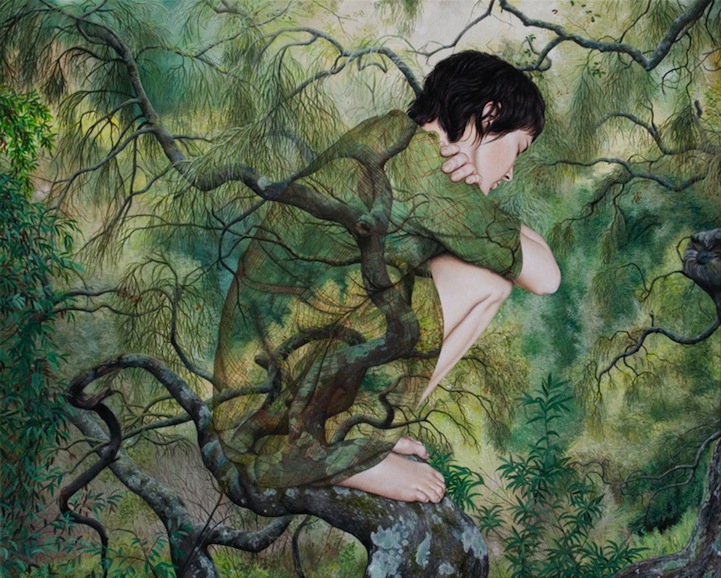
Berlin-based artist Moki creates acrylic paintings that fuse humans with their natural surroundings. She’s known for surreal imagery that cloaks her subjects in lush green moss meadows or idyllic seas of open water. Her landscapes are inspired by the untouched terrains of Scandinavia and Iceland.
Moki sees the world differently because she was born with a neurological condition called synthesia, which means that she involuntarily experiences various senses simultaneously. More specifically, she has chromesthesia, a type of synesthesia in which – when she hears a sound, for example – it automatically evokes a specific color. “Numbers and letters have a color,” she tells us, “days, nights, and years have returning form. Scientists still haven’t figured out why some people have these connected senses.”
After realizing that not every person had this way of perceiving reality, Moki started examining constructivist epistemology, a branch of philosophy that challenges its followers to question what they know and how they know it. Constructivists believe that the only tools available to humans are our senses. It’s only through seeing, hearing, touching, smelling, and tasting that we are able to interact with our environment, and thus, it’s how we construct our world. As she explains, “The ideas of constructivism influence my paintings and my way of living and thinking about reality. The border between reality and what is beyond isn’t defined.”
You can see Moki’s surreal paintings from now through June 21st at her Walden solo show at Galerie Bergwasser in Berlin, Germany. On June 14th, she’ll also be part of a group show called Tiny Trifecta at the Cotton Candy Machine in New York.
4. Oleg Oprisco (Fine Art Photographer)
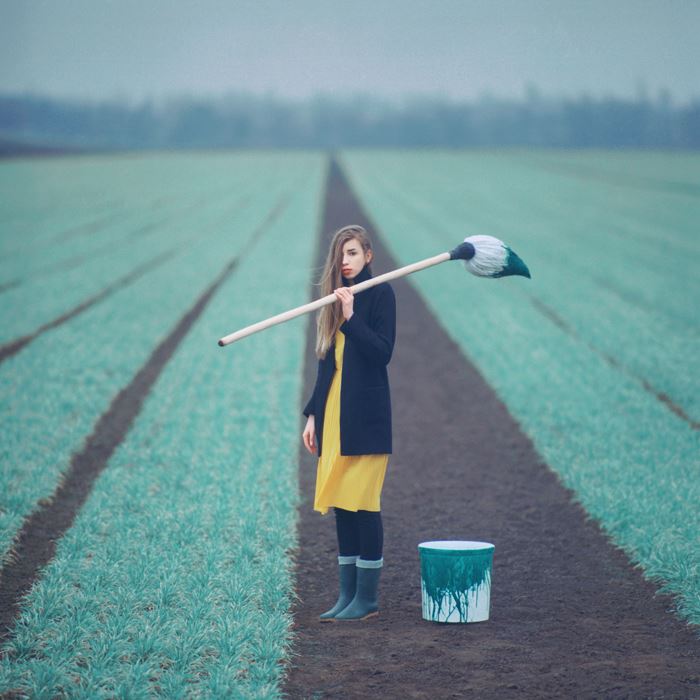
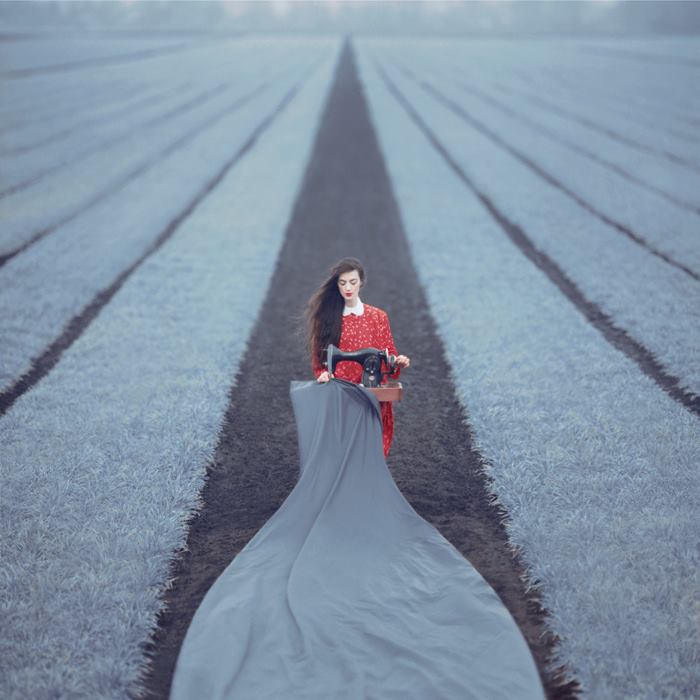
Born in western Ukraine, Oleg Oprisco is a photographer who has risen to fame for his mesmerizing portfolio. He composes each element himself, from the overall concept to the props and costumes. Most impressive is that Oprisco uses a $50 medium format film camera, the Kiev 6C, for his shots, not the expensive DSLRs that most of today’s top talents are accustomed to.
By obsessively working on individual frames until every element is perfect, Oprisco has trained himself to look at every last detail. “It’s a unique system,” he says. “I shoot 12 frames and enjoy the importance of each.” While he adds that it’s both his education and his parents’ values that have guided him – “my parents always told me to strive for the best” – he believes that it’s only through actual, real-world experience that one can truly learn.
5. Matt Molloy (Timelapse Photographer)
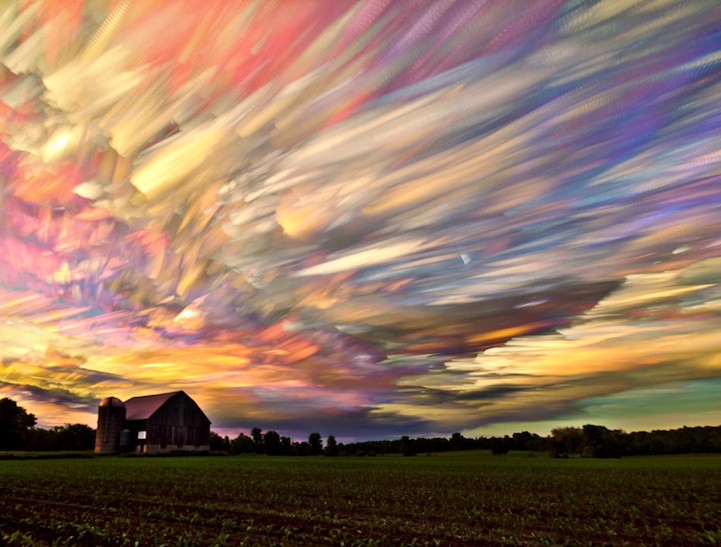
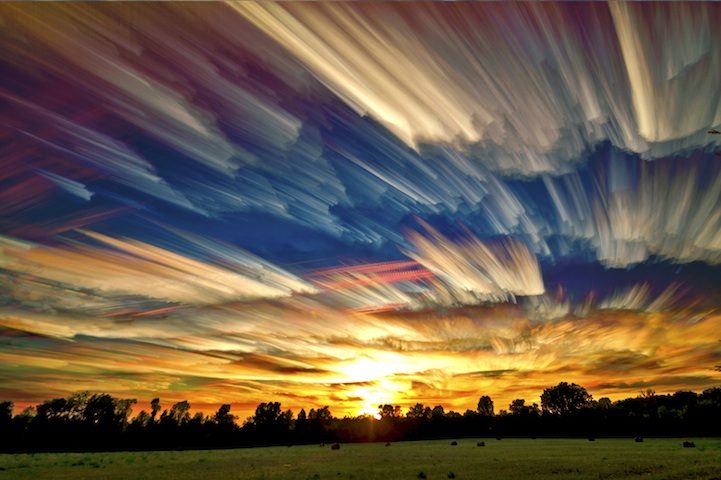
By stacking as many as 100 photos into a single image, Ontario, Canada-based photographer Matt Molloy gives open-minded audiences a new way to enjoy the sky. By experimenting with various photography techniques and software platforms, he’s discovered an inventive way to make the view right above our heads seem incredibly alive. Molloy sources individual shots taken from timelepase videos to create each image, giving both meanings when they’re carefully blended together. “Timelapse photography isn’t simply about capturing a scene,” he says, “the emphasis is more on how the scene changes over time.”
It was only by applying what he first learned about taking timelapses that led him to his artistic vision. As he tells us, “I was making a star trail image, from a timelapse I shot of the stars , and I wondered what the same technique would look like with timelapses shot captured during the day. I tried it with a sunset timelapse and I was amazed with the results. I’ve been doing them ever since. Life is constantly changing and some of these changes are harder to perceive than others, but timelapse photography enables us to perceive time and change much differently than our senses would normally allow.” As you can tell by looking through his ever-evolving portfolio, Molloy is just getting started.
6. Nancy Fouts (Surrealist Sculptor)
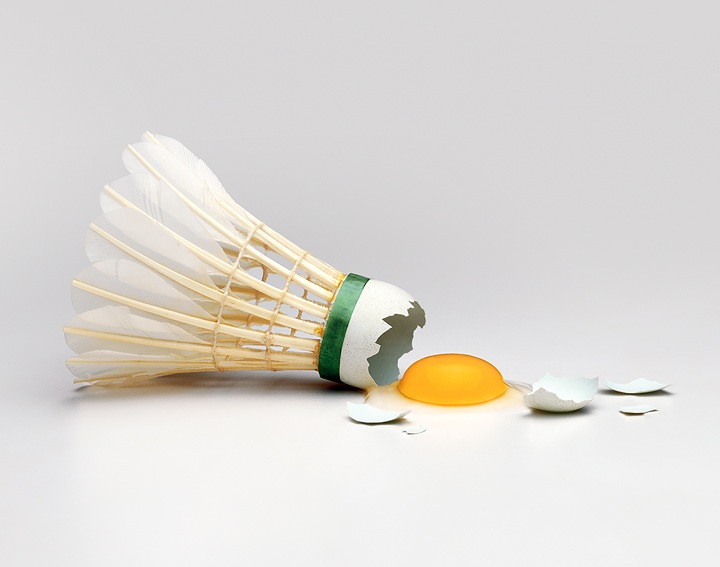
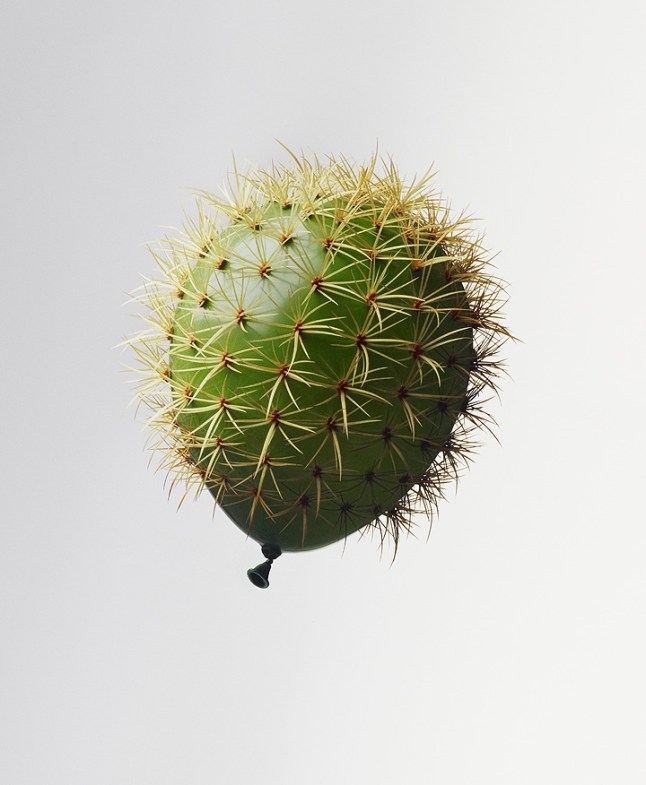
“I like adding a twist to things – a surprise,” says Nancy Fouts. “A little bit of ‘not right’ is great for making one wake up.” The London-based American artist creates fantastically freaky sculptures by combining objects in playful and surprising ways. Fouts studied Art at the Chelsea College of Art and Design and later worked as a model maker in the advertising business. Fifteen years ago, she made art her full-time focus. As to what influences her sculptures, she recalls, “My father’s jokes were surreal in a hillbilly kind way, and I loved that when I was little. Later, when I learned about the surrealists in art school, it clicked that they seemed to match.” Fouts adds that she doesn’t necessarily see the world differently than everyone else – it’s just that her mind isn’t full of preconceived ideas. “I like looking and not knowing what is what,” she says. It’s exactly this reason that she can imagine a coin purse with teeth, or a cherry stem with old dice.
7. Berndnaut Smilde (Installation Artist)
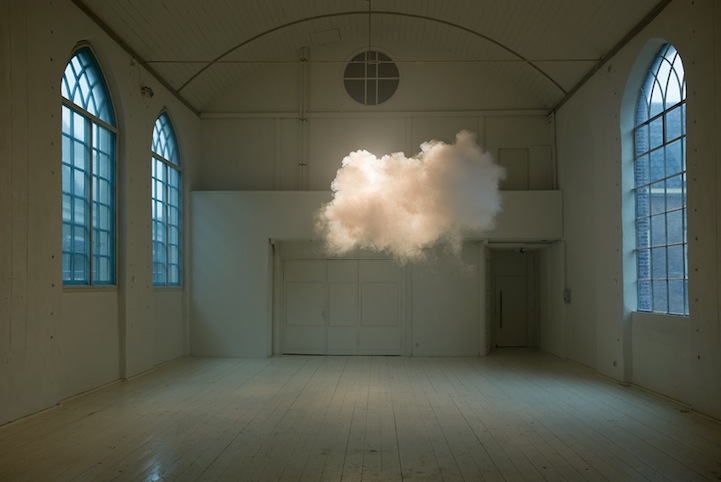
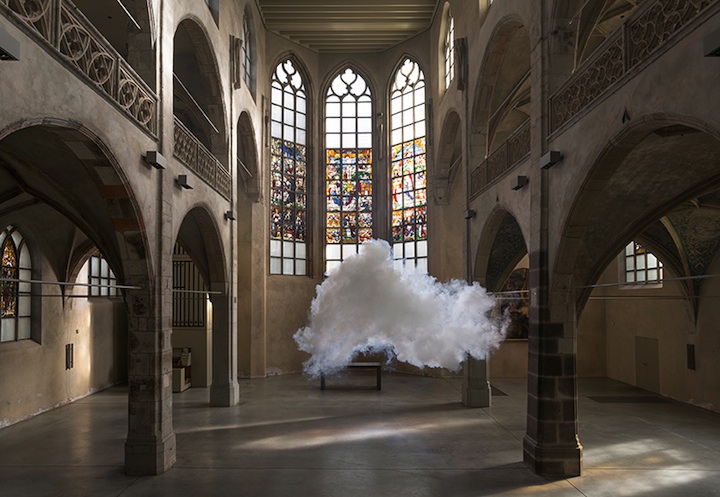
Amsterdam-based artist Berndnaut Smilde magically makes clouds appear inside rooms using a special combination of smoke, moisture, and lighting. For Smilde, clouds represent that situation or location that exists in a state of “in between.” And for his patrons, art is always about having the viewer ask themselves the question, “What if . . . ?” As he explains, “Just like the cloud that builds up and falls apart at the same time, the works question construction and deconstruction, inside and outside, size, and the function of materials. I find it interesting when a work operates in-between reality and representation that it has potential but will never really function.”
Smilde’s work exists in a middle ground between installation and photography. Though the cloud actually exists, it must be captured at precisely the right time (before it disappears). “I use every means necessary to create an idea,” he explains, “I make temporary works that react to the architecture of a location.” As to the role of photography, he states, “It’s the only way to capture the work.”
Berndnaut’s first solo exhibition, Antipode, is at London’s Ronchini Gallery until June 14th. You can also find some of his works on display at the Musée de La Poste in Paris until May 28th.
8. Aakash Nihalani (Street Art/Installation)
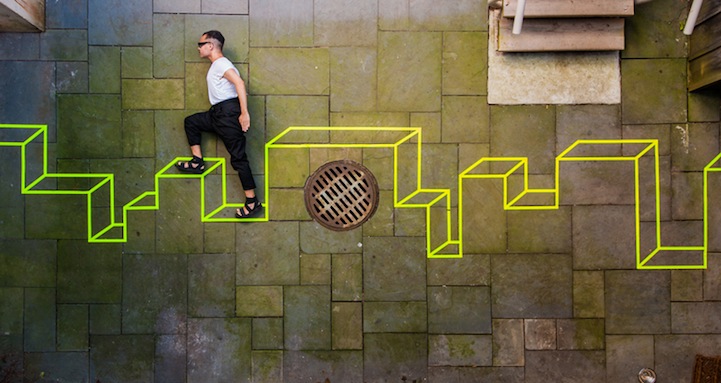
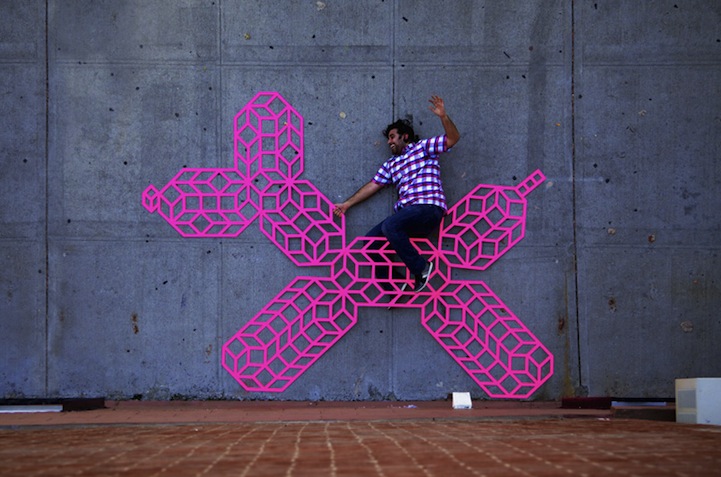
New Yorker Aakash Nihalani is a master with tape, using it to create eye-catching optical illusions. Born in 1986 in Queens and currently based in Brooklyn, Nihalani was dazzled when he first came across the minimalist urban architecture of a major city, describing it as “big boxes, filled with smaller boxes – an endless network of cubes.” Nihalani’s work reacts to the spaces many of us encounter everyday.
“I came upon tape sort of by accident,” he tells us. “I had a painter’s roll that I was using to stick some screen prints on wall for a student exhibition. There was a pedestal in the space that was casting a shadow on the floor that matched the shapes I was using in my prints, so I instinctively outlined the shadow with the tape in my hand.” The rest, as they say, is history.
You can catch Nihalani’s work in Vantage, a current exhibition running through May 17th at Wunderkammern in Rome.
9. Ramon Bruin (Airbrush Artist)
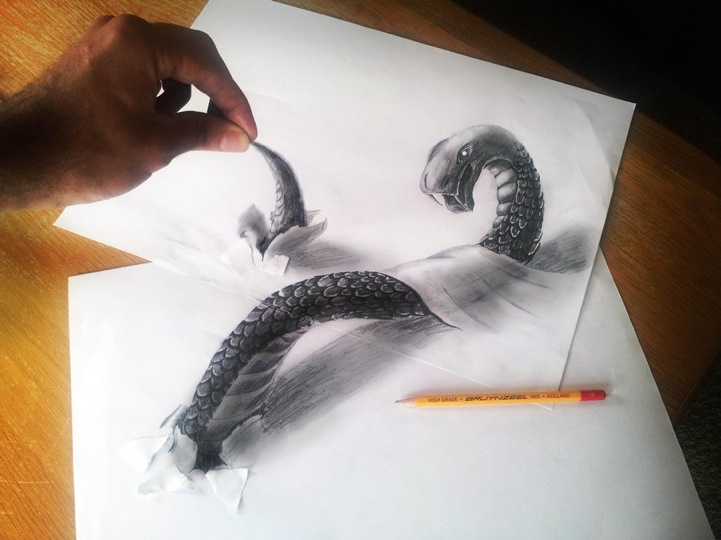
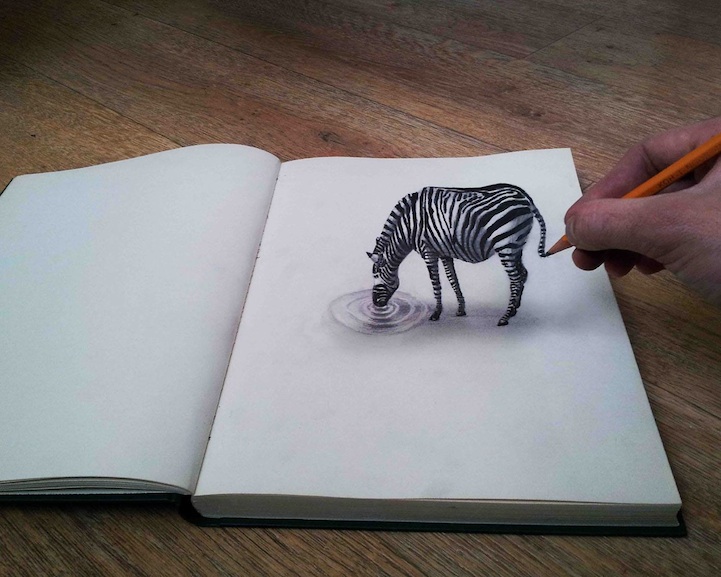
Hailing from the Netherlands, artist Ramon Bruin produces mind-boggling optical illusions using an airbrush. He learned his craft at the Airbrush Academie in Lelystad from 2007 and 2010; since then, he’s been shocking the world with each new masterpiece Bruin challenges himself by creating art that is as realistic as possible, using the least amount of materials necessary.
Bruin began experimenting with 3D optical illusions out of sheer boredom. “I’m not the kind of guy who watches TV every evening,” he tells us. “Instead, I’m drawing or painting. Every time I drew something beautiful, I’d take a picture and put it online.”
“About two years ago, I noticed that when I took a photograph my drawings from a slight angle, the drawing would get distorted. I adjusted the drawing and took another photograph of it from a different angle and noticed it came a bit to life. That was the ‘big’ moment for me. After that, I started exploring this technique. I created totally distorted drawings and took photographs of them from very low angles.
The artist continues to find new and inventive ways to showcase his work. “Now I’m drawing on multiple sheets of paper and I’m adding props. I let my drawing work with the props, or my own hands, and now I’m at a point where I draw beneath the paper. I draw on top of and underneath several sheets and let them work together until they become one ‘construction.'”
10. Sarolta Bán (Digital Artist)
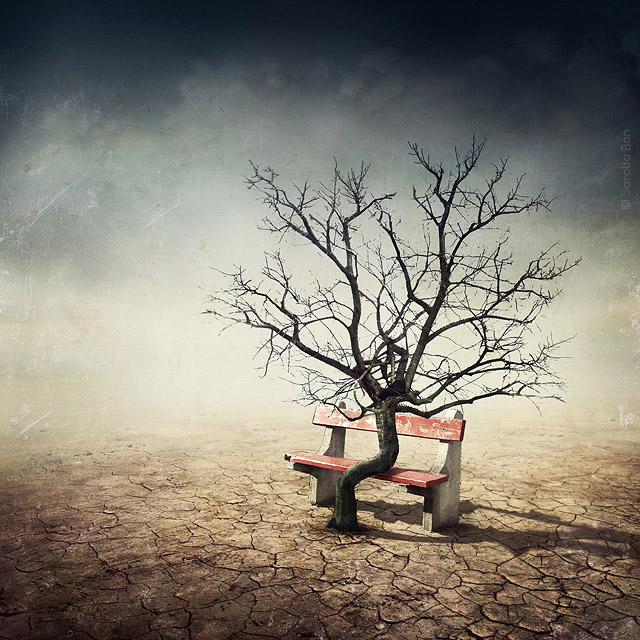
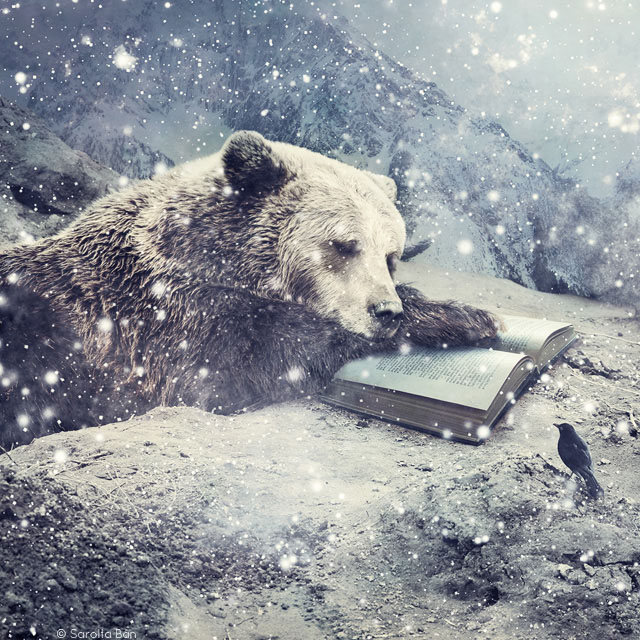
A lone tree takes a break by resting on a bench. A large brown bear lounges by a rock, reading a book. An old man and his faithful dog gaze at the glowing light ahead of them, while a line of leaves mysteriously march up their backs. In the world of Budapest, Hungary-based photographer Sarolta Bán, these aren’t far-fetched ideas – these are actual scenes. Through photomanipulation, Bán turns our everyday moments into contemplative works of art. “For me, ordinary objects are important, because I see beauty in small details.”
“I was a creator from the very beginning of my childhood – ever since I can remember,” she says.” When I was a kid, I learned to draw before I could walk or speak.” Through dedication and hard work, Bán fulfilled a lifelong dream by turning her passion into a career. “Photomanipulation was a hobby, at first, and then I learned how to create images from experimentation. I like playing with pictures – it gives them an almost unlimited set of possibilities – and with this, I’m able to express feelings and thoughts that I otherwise couldn’t.” Tracing it all back, though, she says it started from a picture she took of a house in Torino. “I didn’t like the sky, so I grabbed one of my photos and changed it to one from Hungary,” she says. “I was delighted that I could do that.” She continues, “It’s always a great feeling, when the elements of a picture start to work together and the image starts its own ‘life’.
Now that you’ve checked out our list of reality shattering artists, tell us, which of their worlds do you want to live in? ![]()
